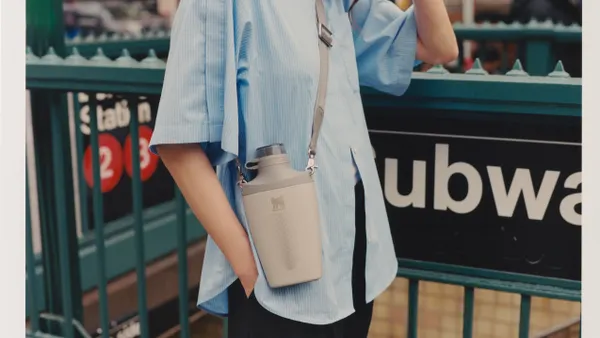Dive Brief:
-
In the first quarter of 2016, 45% of web-based shoppers were on smartphones, and and the trend is on track to rise to 60% by the end of the year, according to a survey released Monday by e-commerce company Demandware.
-
While mobile is now the prefered platform, 91% of those surveyed by another software provider, LogMeIn, believe there should always be a way to contact a real person during their mobile experience. Easy-to-find contact information for support ranked highest (44%) among the factors most important to users seeking a good mobile experience. More than 72% abandoned a mobile experience some time in the last year because such contact details were difficult to find.
-
LogMeIn also found that satisfaction with mobile experiences is declining: Retailers in particular saw a decrease from 64% user satisfaction to 55%. In addition, 85% of customers are unlikely to continue engaging with a business on mobile following a poor experience, according to the survey.
Dive Insight:
E-commerce company Demandware, acquired by Salesforce last month, is adding new data to the growing evidence that mobile is key in online shopping. But its survey found that actual purchases continue to be elusive: Mobile checkout completion is 11% lower than the combined rate from all other devices.
But smartphone penetration continues to grow: By 2019, some 71% of U.S. consumers will have a smartphone, compared to 59% today, according to eMarketer. Demandware estimates that by the end of next year, consumers will be buying more often on their phone than on any other device, and by Q4 2018, consumers will use mobile phones to shop 13% more often than on their desktop computers.
“Mobile e-commerce has been growing by double-digit percentages year after year, so as we see this increase in usage and growth, we're also going to see growing demand for apps and technologies that make the mobile shopping experience better,” Ben Wong, VP of marketing at Bindo, told Retail Dive last year. “So things like more secure payment portals, easier payment methods (tap-to-pay, etc), and more mobile integration into the physical store itself. All of these are things are ideas that could be brought together and provided by a proper digital wallet.”
Bloomberg reports that e-commerce is still growing, up 1.3% since Q1 2001, and accounted for $92.8 billion in revenue in Q1 2016, or 7.8% of total retail sales. Mobile-based sales more than doubled from 2013 to 2015, according to comScore.
Some retailers are on the case. Target’s Cartwheel app in particular has enjoyed an 85% boost. Poonam Goyal, Bloomberg Intelligence senior retail analyst, says Cartwheel is “one of the best” retail apps, noting that in general “Retailing today is more about the customer experience than it is about anything else.”
Women’s and children’s apparel retailer Rainbow, which has 1,100 stores, says mobile devices bring in 70% of its e-commerce traffic, up from 50% two years ago. The retailer recently developed an app, though most of its traffic still derives from its mobile site, said David Cost, Rainbow’s SVP of digital commerce and marketing, who told Bloomberg “The universality of the device has been a game-changer.”













